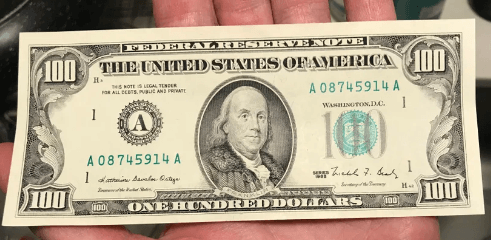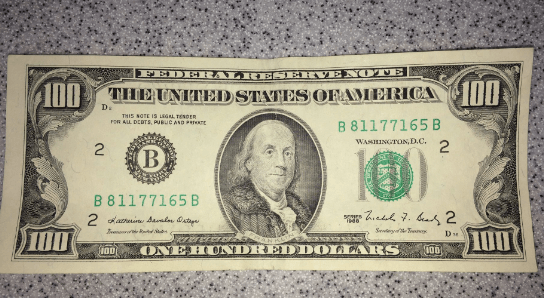A currency collector or simply curious about the value of your old bills, the 1988 series $100 bill is an intriguing piece of U.S. currency. While these bills may look like any other old paper money, their worth can vary based on condition, rarity, and other factors.
Let’s dive into the details to understand the true value of a 1988 $100 bill and what makes it special.
What is the 1988 Series $100 Bill?
The 1988 series $100 bill was issued by the U.S. Treasury and features a portrait of Benjamin Franklin on the front. The reverse side displays an image of Independence Hall. These notes are part of the Federal Reserve Note series and include standard security features for the time, such as watermarks and security threads (introduced in later printing years).

The 1988 series is notable for being among the earlier modern notes before the significant redesigns that began in the 1990s to combat counterfeiting.
Factors That Affect the Value
1. Condition (Grading)
Currency collectors use a grading scale to evaluate a bill’s condition:
- Crisp Uncirculated (CU): Perfectly preserved, with no folds or wear. These are the most valuable.
- About Uncirculated (AU): Minimal signs of handling but still retains its original crispness.
- Very Fine (VF): Light circulation with minor folds or creases.
- Good (G): Heavy circulation, significant folds, or signs of wear.
For a 1988 $100 bill, a CU example can fetch a premium compared to one in heavily circulated condition.
2. Star Notes
Star notes are replacement bills that have a small star (*) next to the serial number. These are printed in limited quantities and are more sought after by collectors. A star note from the 1988 series can significantly increase the value.
3. Rare Serial Numbers
Collectors often seek bills with unique or low serial numbers. Examples include:
- Repeating patterns (e.g., 88888888)
- Low numbers (e.g., 00000001)
- Palindromes (e.g., 12344321)
If your 1988 $100 bill has one of these rare serial numbers, it could be worth much more than its face value.
4. Federal Reserve Bank Issued
The Federal Reserve Bank that issued the bill (noted by a letter and corresponding location) can also impact its value. Some reserve banks issued fewer 1988 series $100 bills, making them rarer.
How Much is a 1988 Series $100 Bill Worth?
The typical value of a 1988 $100 bill depends on the factors above:
- Average Circulated Condition: $100–$120
- Crisp Uncirculated Condition: $150–$300
- Star Notes: $250–$500 (or more for rare examples)
- Rare Serial Numbers: Up to $1,000 or higher, depending on the pattern and demand.
Where to Sell or Buy a 1988 $100 Bill
If you’re looking to sell or buy a 1988 series $100 bill, consider the following platforms:
- Online Auctions: Sites like eBay are popular for collectors.
- Currency Dealers: Professional dealers can evaluate and offer a fair price.
- Collector Forums: Niche forums provide a community of enthusiasts who may be interested.
- Grading Services: Have your bill graded by companies like PCGS or PMG to maximize its value.
Tips for Preserving Your 1988 $100 Bill
To retain or enhance the value of your bill:
- Store it in a protective currency sleeve.
- Avoid folding or exposing it to moisture.
- Keep it in a cool, dark place to prevent fading or damage.
Conclusion
The 1988 series $100 bill holds historical and collectible value, depending on its condition, serial number, and other factors. While many of these notes still circulate at face value, rare examples can fetch hundreds or even thousands of dollars. If you own one, consider having it evaluated to uncover its full potential.
For more insights on collectible currency, check out PennyMatrix.com—your go-to guide for financial tips and treasures!

